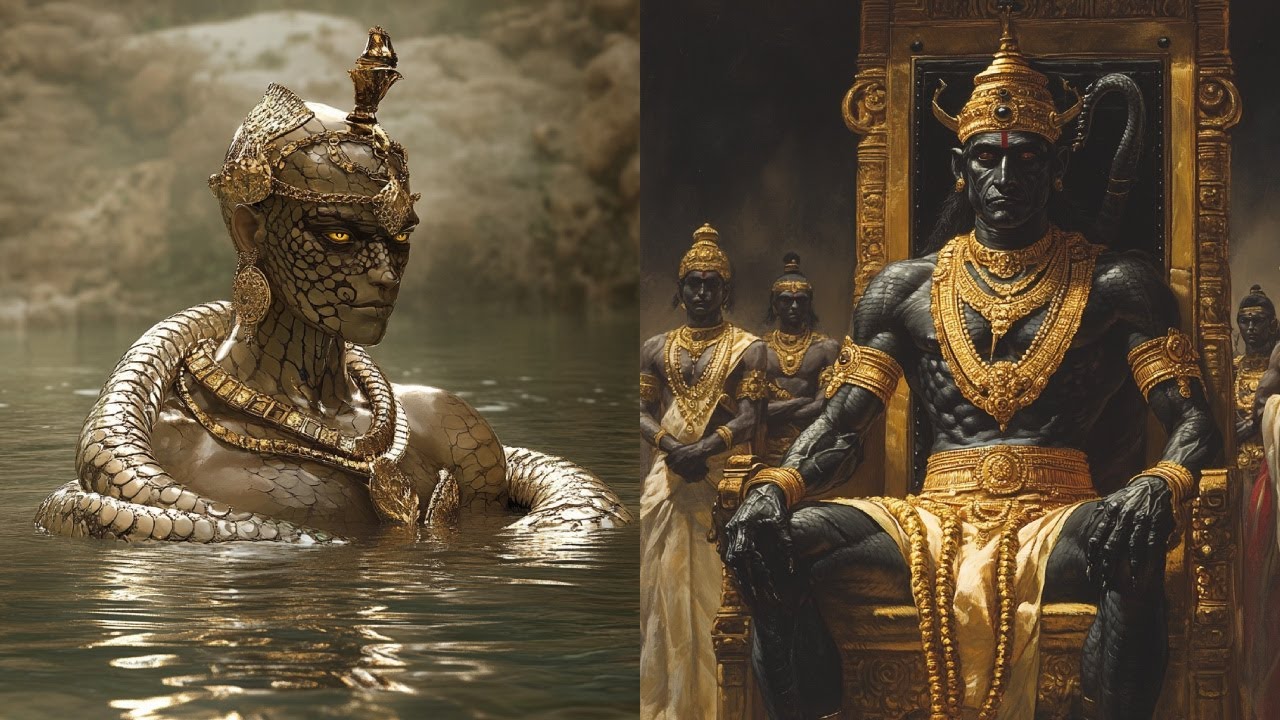New Research Proves That The Hindu Texts Are Correct About These Creatures! It’s SCARY!!!

New Research Validates Hindu Texts About Mysterious Creatures – The Nagas! A Fascinating Discovery
For centuries, human civilizations have been captivated by tales of reptilian beings known as Nagas—enigmatic creatures said to bridge the worlds of humans and serpents. These entities are not just products of imagination but are deeply rooted in cultural lore, historical records, and even archaeological findings. The concept of the Nagas challenges our understanding of ancient history, suggesting the Earth may have once been home to beings whose existence defies modern comprehension.
The Nagas are described as semi-divine entities, part human and part serpent, with the ability to shift between forms at will. Legends place their dwelling in subterranean realms, often referred to as Patala or Nagaloka, which are said to be rich in treasures and secret knowledge. Their association with water—rivers, lakes, and seas—further hints at a profound connection with the origins of life. Could these stories stem from real encounters with beings that thrived in harmony with Earth’s natural elements?
Archaeological discoveries add intriguing evidence. Excavations at sites like Chirand in Bihar, India, have revealed terracotta figurines and artifacts indicating serpent worship dating back to the Neolithic period. The reverence for Nagas as protectors of fertility and water suggests they were viewed as more than symbolic. Across Southeast Asia, similar tales reinforce this shared cultural memory. For instance, Cambodian legends tell of the union between an Indian Brahman and a serpent princess, symbolizing the merging of human and reptilian lineages. Was this story purely allegorical, or does it conceal traces of forgotten history?
Architectural testaments to the Nagas’ influence are abundant. In Thailand, serpent sculptures adorn temple stairways, symbolizing guardianship and protection. These carvings aren’t mere decoration but reminders of an era when Nagas were seen as integral to human existence. Their portrayal as protectors and guides suggests they were once regarded as custodians of wisdom and secrets hidden beneath Earth’s surface and waters.

The Nagas’ connection to water, often associated with life and mystery, is compelling. While snakes’ natural affinity for damp, concealed spaces might explain some of these associations, ancient accounts describe immense, supernatural serpentine beings capable of controlling the elements. Were these stories symbolic, or did they reflect encounters with extraordinary creatures beyond our understanding?
India’s cultural landscape is dotted with festivals honoring serpent deities, such as those in Odisha. These rituals, offerings, and chants may echo ancient agreements between humans and these beings—a testament to coexistence that science has yet to fully grasp. The universality of serpent legends adds further intrigue. In the Philippines, the Bakunawa, a serpent-like dragon, is said to cause eclipses by attempting to devour the moon—a tale mirrored in other cultures, suggesting a shared ancestral memory of celestial serpents.
Fossil evidence also provides clues. Remains of large prehistoric reptiles, some of extraordinary size, have been uncovered worldwide. These discoveries suggest early humans may have coexisted with massive serpentine creatures, potentially giving rise to myths about beings with supernatural attributes. Artistic depictions of serpentine beings are not limited to Asia but also appear in ancient Mesopotamian, Mesoamerican, and African cultures. Each tradition assigns unique qualities to these beings, reinforcing the idea of a shared recognition of their significance.
Could the Nagas have been an advanced reptilian species that once inhabited Earth? Fossil records show reptiles thrived during the Mesozoic Era. Could a subset of these creatures have developed intelligence, surviving in hidden sanctuaries while others perished? Such a theory challenges conventional science but aligns with recurring descriptions of intelligent humanoid reptiles in ancient texts.
Subterranean realms often linked to the Nagas add another layer of mystery. Legends describe vast underground cities filled with treasures and advanced knowledge, guarded by these beings. While modern exploration has yet to uncover such realms, their persistence in global folklore raises questions about what might lie beneath our feet. Did ancient civilizations access subterranean worlds that modern humanity has forgotten?
Modern interpretations often dismiss Nagas as symbolic, reducing their significance to mere mythology. Yet the consistency in their portrayal, the detailed descriptions of their abilities, and their presence in cultural rituals suggest otherwise. These beings played a central role in shaping ancient civilizations’ views of life, death, and the cosmos.
Even today, reverence for serpentine deities persists. In India, temples dedicated to snakes still attract devotees seeking protection, fertility, and wisdom. This enduring belief hints at a legacy that remains unbroken over millennia. Could the Nagas be connected to humanity’s ancestral memory? Were they visitors from another realm, as some theorize, or a highly advanced native species that left an indelible mark on our collective consciousness?
The answers remain elusive, shrouded in the mists of time. Yet the fascination with Nagas endures. From intricate carvings at Angkor Wat to folk tales in remote villages, the presence of these beings continues to inspire wonder. They remind us of a time when the line between natural and supernatural blurred, and humanity’s understanding of the world was shaped by forces beyond explanation.
The legacy of the Nagas challenges us to question our assumptions about the past, urging us to seek truths hidden in the depths of history and the Earth itself. This mystery, far from being resolved, is a puzzle waiting to be unraveled—a key to a forgotten chapter in humanity’s journey.








